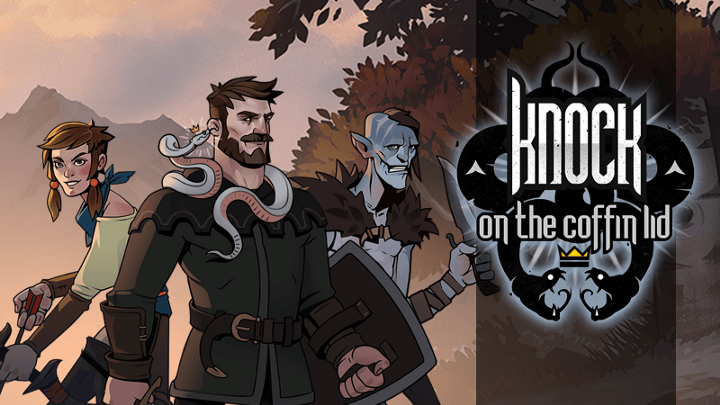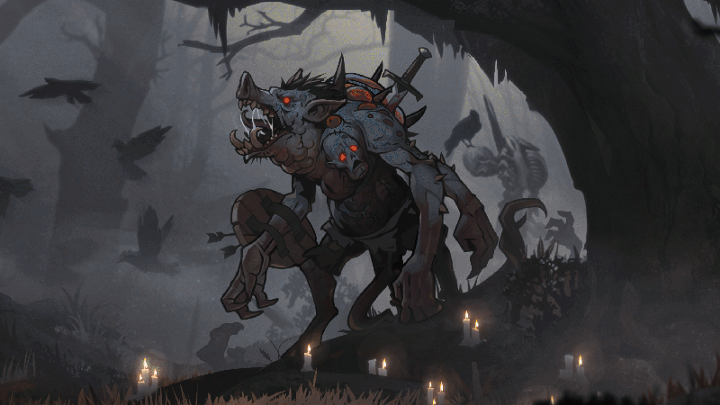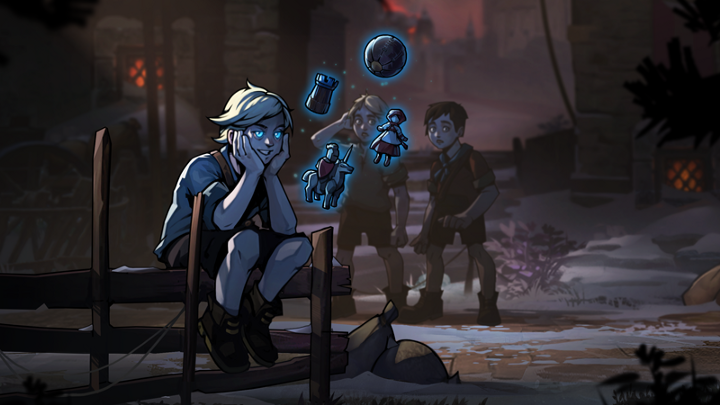Probably every gamer likes to get mesmerized by beautiful landscapes when gaming. You stand on a mountain and look into the distance… What beauty! Or you look at the detailed design of characters, or their intricate costumes. Or at weapons! In short, we love things through our eyes first! But as soon as you turn off the sound, part of the magic is gone — you instantly notice that the sound constitutes a considerable part of the overall atmosphere.
We are a Redboon team, we are indie developers and we want to talk about how games are created using the example of our own experience — card roguelike Knock on the Coffin Lid.

When we started working on Knock on the Coffin Lid, we learned from our own experience how important sound is, and how much effort should go into making everything in the game — from blows to the pressing of interface buttons sound decent. And it seems, we’re succeeding in that because Knock on the Coffin Lid has already been nominated in the past for “Best Audio” at the last Indie Cup!
To tell you more about this, we interviewed our sound magician Anastasia.
What is the correct name for your profession?
Sound designer.
What is the job of a sound designer? When we talk about a composer, we know that she/he creates the mood in a scene with music.
Yes, they are responsible for writing music. A sound designer, or sound producer of a project (I do a lot of things for the project), creates unique sound effects for a game or a video, records voice acting, processes the results of voice acting, and integrates them into the project. I also work with a sound engine that interacts with the game engine. If you work on a 3D project, then you also modulate the sound space in which the player is located, adjust positioning, reflection, diffraction, and interference. If this is a 2D game, like in our case, then you only adjust the balance to make it comfortable and pleasant so that you can hear the music well, and so that the sound effects are not too sharp.

It sounds very complicated. So, do you do work with voice acting, too?
Yes. I’m not a voice actor myself. Special people are hired for this, or we use libraries with ready-made voice-overs, for example, of monsters, which you can use to create different characters. But the final version is put together by me.
Do you also work with the voice actors themselves?
I do. For example, for Coffin Lid, we recorded a voice library with a guy and a girl. They are both extreme vocalists. They have a lot of interesting vocal techniques with distortion and imitating different scary sounds, like for zombies or monsters. The girl makes incredible ultrasound voice effects that I want to use for the vampires. We’ve recorded a large library and we’ll use it in the future with new characters and enemies, or we’ll remake the older monsters that could do with improvement.
Do you also take part in the auditions for actors?
Yes, of course. For example, for the voiceover of the videos, candidate actors send us several versions. I take part in choosing the right actor, the right intonation. I direct what can be corrected or added in a particular scene.

Now the team is looking for a real Irishman to voice Bjorn, right?
Yes, that’s right. We listened to several options, looked for a suitable one. We needed a person who could do old English pronunciation. It matches the image of Bjorn. Unexpectedly, we found such an actor in Los Angeles.
You joined the project after it had started. What were the problems with the sound in the game when you started working? How were they solved?
There were indeed several problems. The first thing I noticed was that the sounds didn’t have variations. That is, if it was a blow from a weapon, then there was only one version for that blow. We immediately moved to a new audio engine, where all the new content was made with variability. Even if one sound is followed by the same one, it will have a slightly different tone so that it’s not annoying. We also added some variability to the old sounds we liked.
We also added adaptive music. It can’t be heard in the whole game right now, but it’s there where the composition of the track itself allows it. For example, the first location — now it’s not just three different compositions playing there in turn. The players have a certain intro from one composition while they haven’t done anything. When the players strike their first blow, the music adjusts and more active music starts playing. We tried to make it unnoticeable to the player, but it was necessary to make battles and the game itself more dynamic.
I also had to fix small errors. For example, we noticed a large number of low frequencies in some sounds. They’re not audible with ordinary speakers or headphones, but if you connect a large audio system, you’ll hear the rattling of the subwoofer. We were like: “Is this a bug or a feature?” We had to fix it.

Did the variability of the sound apply to the enemies, too?
We’re recording a library of monsters for this very purpose — to add variety and variability so that the players won’t get bored with something at the very start, and so that they won’t decide that they’ve had enough of the game. This effect on the player can be cumulative, you know: here I got a bug, maybe I don’t like something else, and then there are annoying sounds. We’re trying to prevent that.
Right now I’m creating a library. We’ll change the variants that I don’t like and add new sounds. But it seems to me that even now the game already sounds different and more interesting than when we started. There are a lot of sound events in the game when the entire interface is voiced, and it interacts with you. It’s like the sensations of a paper book combined with an electronic one — the tactility, the rustle of pages, the swish of paper under your fingers. Such tactility is important in both UI and gameplay.
How do you create the atmosphere in KOTCL?
There are several important issues: the story (the lore and the plot), the location (what kind of place is this, what kind of characters are here), and the soundtrack. All this should work together. Looking at the big picture, you come to realize what sounds are required: serious or not, scary or cute. When serious music is playing in the background, and you add funny sounds, the player might get confused.
Picking out the atmosphere, you rely on the animation and the lore, so if you have a swamp, then the sound effects should reflect it: it’s not just frogs croaking, but also wood creaking, the swamp squelching, the winds howling. The players should understand by hearing the sound alone where they are and that they’re not safe. I always ask to see animations of everything I’m working on. You need to be in sync and see the personality of a character. If these are the main characters, then we also study their personality to understand how they sound. For example, I did a test voiceover for the very first video of the new hero Bjorn, and the whole team was like, “Well, no, we didn’t imagine him like that!”. They imagined a character with a low voice, and I made his voice high, but angry. It sounded more like a classic elf.
It turned out to be a game of contrast: the elf himself is scrawny and small, but his inner beast, the Lycan, is huge, serious, and heavy. This added atmosphere and color to his image. But in fact, we are now looking for another voice actor. The team wants Bjorn to always be “heavy” like that.

Did anything unusual happen during your work?
Going back to our library and the voice actors I work with, the guy has excellent low tones; if you lower the pitch by an octave or two, you’ll get a huge monster, very scary. But the funny thing is, he couldn’t do something growling and very scary, it just turned out to be growling, because the guy himself is very peaceful. But we’ll fix that sound separately.
And the girl… She’s something else! We have characters in the game — demons whose voices I imagined as some kind of ultrasound. I couldn’t find such textures in the libraries. It’s difficult to make them, but Olya was capable of it. I recorded her, and it’s totally… there was a feeling that I was scared; it was creepy. It was an ultrasound, but with distortion, with a strain. I got goosebumps.
Is any of this already in the game?
No, we don’t add sounds to the game in small portions. It’s easier to make a big pack and add everything at once. I can’t wait to finish the library and add it to the game.

